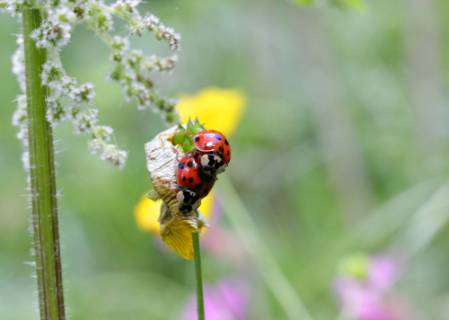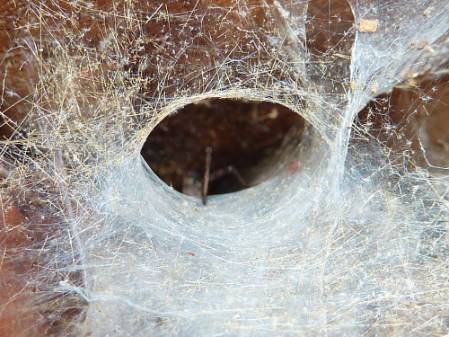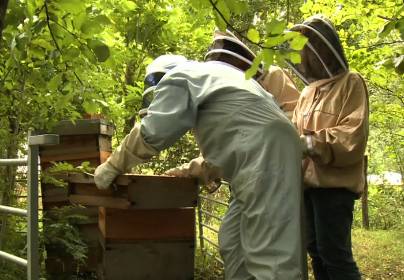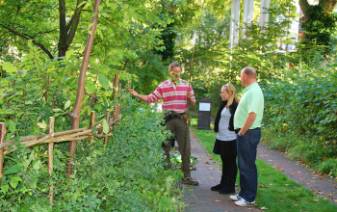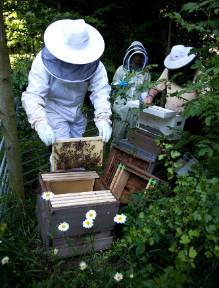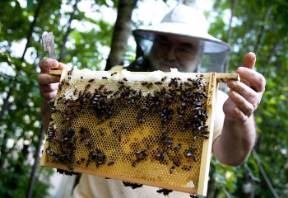On a summer’s day in the Wildlife Garden and the Museum grounds, you might find several hundred different kinds of insects. If you count the individuals, including the honey bees and ants, then maybe thousands. Who knows, they might even outnumber the daily throng of human visitors to our galleries and exhibitions.
Indeed, there are more species of insect in the world than any other group - experts have named over 1 million. (Some entomologists even estimate 10 million species.) And not a day goes by for us humans, I’m sure, without an encounter with at least one or many of them.
Discover insect life this weekend in the Wildlife Garden as you explore the meadows by the ponds. There are displays, activities and tours and also talks in the nearby Darwin Dentre to join.
Come along on Saturday and Sunday, 2 and 3 July, to Insect Weekend in the Wildlife Garden and Darwin Centre and meet some of this multitudinous and diverse group. Find out about the buzzers, flutterers and crawlers from bees to beetles and damelflies to butterflies and moths.
On both days, there will be lots of fun activities for all ages, and many displays to explore.
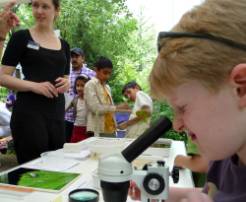
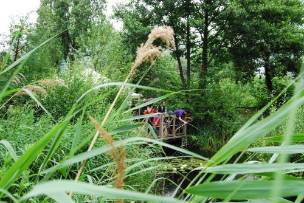
What will you see at Insect Weekend under the microscope? And tread carefully by the ponds, froglets are about. Select images to enlarge
Recent sightings in the garden includes lots of butterflies, from large white to comma, holly blue and speckled wood varieties.
Tiny froglets and toadlets are emerging from the ponds, so you'll need to tread carefully in the grasslands by the ponds. And don't forget the hundreds of tropical butterflies to see next door on the East lawn in our Sensational Butterflies exhibition.
Another highlight of the weekend event on Sunday will be botany expert Roy Vickery's tour of the garden about the 'forgotten uses of wild plants'. The 30-minute tours start around 1.45 and 3.15.
Spiders are distant relatives of insects but that doesn't seem to bother them when it comes to their dietary requirements. Not sure what would escape this spider web photographed recently in the Wildlife Garden!
Visitors will get an insight into the insect diets of other creatures like bats, spiders and frogs. Apparently, at last month's Bat Festival in the Wildlife Garden, a lttle pipestrelle bat spent nearly an hour flying over and around the main pond, in pursuit of midges and other small insects. It caused a bit of a stir! And the Wildlife Garden team will be doing a bat survey on Saturday.
Max Barclay's Beetlemania talk and his collection highlights on Saturday are sure to be popular and another talk on Sunday, Caught in a Trap, will reveal the secrets of collecting insects. Both free talks are in the Attenborough Studio at 12.30 and 14.30.
Find out about the Wildlife Garden online
What is an insect?
Insects (from the Latin insectum) are a class of living creatures within the arthropods that have a chitinous exoskeleton, a three-part body (head, thorax, and abdomen), three pairs of jointed legs, compound eyes, and two antennae.
Find out more about insects and spiders on our Nature Online pages
Every day we get enquiries about identifying strange looking insects on our online Identification forum
Join the OPAL Bugs Count survey - an amazing 204,205 bugs have already been counted so far.
Read the Bug Count launch news story and find out the 6 minibeasts to look out for



